
(Lalo Alcaraz / CALÓ News)
The Los Angeles neighborhood of Elysian Valley, commonly known as Frogtown, is one of the closest adjoining communities to the Los Angeles River. In the last few years, the community, which has been feeling the effects of gentrification, has become popular for its craft breweries, art studios, taquerias and boutiques.
Along the river’s banks, just a couple of blocks from the trendy shops, there exists an alternative, but closely linked, community of homeless Angelenos who have made the river their home.
The Los Angeles River, one of the most well-known bodies of water on the West Coast, is a 51-mile-long river that originates in the San Fernando Valley and empties into the Pacific Ocean in Long Beach.
City staff estimate that hundreds of people live along the riverbed in neighborhoods like Frogtown, Glassell Park and Atwater Village.
Across the Los Angeles County’s Service Planning Area Four, which includes Elysian Valley along with other densely-packed neighborhoods across central Los Angeles, including Boyle Heights, downtown and Echo Park, the most current data, published in 2024, showed there were 18,389 unhoused people, the majority of whom were Latino and Black.

Frogtown is one of the closest adjoining communities to the Los Angeles River. (Photo by Brenda Verano/CALÓ News)
Last year, the county’s homeless count showed that the number of homeless people was down slightly compared to the prior year. Residents of Frogtown say there are also fewer people living along the river in that neighborhood these days, though several people remain, many of whom said they had lived in encampments along the river for years.
Lauren Lemos, who, along with her husband, opened Wax Paper sandwich shop in 2015 in a 226-square-foot modified shipping container on the western edge of the river, said she has seen a decrease in homeless encampments in Frogtown over the years. “When we first opened Wax Paper, I saw a lot more unhoused people than I see now,” she said.
She is well aware of the tensions gentrification has created in the neighborhood and said she and other shop owners along the river remain or at least try to remain in community with the unhoused population, offering food and water and aiming to be a community hub.
“They’re also our neighbors,” she said of the homeless residents along the river.

Francis David Madrid. (Photo by Brenda Verano/CALÓ News)
On a recent rainy Friday morning, Francis David Madrid stood on the eastern edge of the river, across from the coffee shops and trendy stores, looking out on the river, where the current was strong and active.
Standing next to an altar of things he’s collected, including small trinkets, plants and other wood and plastic home decor items, he quickly opened up with a shy and low voice about life along the river, which he said is always changing.
“It's a struggle for survival every day here,” Madrid said.
He and his girlfriend, Iruz Altamirano Melexy, have been living on the edge of the river for the past five years, he said.
Their home is a mattress covered with a blue tarp tied to a fence, where they store their clothes, shoes, toys for their one-year-old cat named Chiquita and other items they have picked up throughout their time in the streets.
As soon as the sun comes up, they focus on securing food for the day, which they usually get at shelters, food banks, local shops that know them and give them food, churches and other organizations, Madrid said.
“Getting and attaining food for the day is the priority as soon as I wake up,” he said. “We do what we can throughout the day. We do not have any set schedule.”
Madrid, 40, is originally from Honduras and immigrated to the U.S. 19 years ago.
Addiction and what he calls “family disintegration” made him homeless, he said. He had friends who lived on the river before him. “I would come and visit them,” he said. Until one day, when he and his girlfriend stayed.
“We all get along and care for each other here,” Madrid said as he pointed out other encampments just a few steps away from his.
Madrid and Melexy have been together for nearly as long as they have lived on the river.
Melexy said she found herself without a home after her family kicked her out. Since then, her mother lost the apartment they lived in and is also now homeless. Her family does not approve of Madrid and her living on the river.
Melexy, who unlike her boyfriend, was born in the U.S., has been offered housing multiple times, but just for herself.
“He’s my family,” she said. “I do not want to leave him. Many people tell me I’m not getting all the help because I’m with him and I sometimes wonder if that is true.”

Chiquita, Melexy's cat. (Photo by Brenda Verano/CALÓ News)
She spends most of her time playing with and caring for Chiquita, which was a gift from her boyfriend, who got the cat after exchanging it for a pack of beer.
The areas surrounding the river can be peaceful but very dark at night, leaving them unaware of any wildlife. “You can’t see anything after the sun sets,” she said.
They use firewood to cook and a solar panel that Melexy found to charge their phone. “He cooks for us. He's a better cook than I am,” she said.
The hardest part of living on the river is not knowing what the day might bring, Madrid said. It is hardest when it rains because all their things get wet and they are unable to go out and get food.
Even so, he added, “We can’t complain. Estamos de pie. We also know nature needs water.”
A few feet away from their encampment, Jenny, a 40-year-old Latina, was protected from the rain in the tent she set up in a Glendale Freeway underpass. She had filled the space surrounding it with painted masks, paintings and small trinkets.
A long painted cloth that covered her tent was painted by her ex-boyfriend, who sat with her outside the tent.
The two met before they both became homeless and lost contact after he was incarcerated.
“He hit me up after coming out of prison, and I was like, ‘I’m living in the river now,’ and he said, ‘OK, I’m coming,” she recounted.
Since then, Jenny said they care for and look out for each other.
She has lived in different spots up and down the river for over eight years, she said.

Jenny lives in a tent she set up in a Glendale Freeway underpass. (Photo by Brenda Verano/CALÓ News)
“I like it here. It’s very peaceful,” she said. “I’ve been to Skid Row, but I did not last there.”
On Skid Row, she said she was bullied for how she dressed. “People from the shelters told me I had to try and it was not for me,” she said.
With a contagious smile and upbeat voice, Jenny said she was getting ready for an appointment later that day to complete a shelter intake, where she would be able to spend days and nights.
“I like to chill outside my tent, do my makeup, look out at the river or go for walks,” she said.
Her favorite days are the weekends when the local church brings toiletries, food and a portable shower.
She generally stays away from the small shops across from the bridge. “I don’t really go to their business unless I know they are welcoming of [homeless people],” she said. Others who live along the river often share information on businesses that give food or resources for free, she said.

A sign from a business across from the homeless encampments. (Photo by Brenda Verano/CALÓ News)
No one other than the city bothers her or her neighbors, she said, although she suspects there are people or local residents who call the city about the so-called “trash” under the pathway. The trash is her home, she said.
A couple of months ago, city workers arrived, taking her tent and everything inside when she was not home, she said. “My homegirl was coming to see me when it was happening and tried to stop them,” she said. “They told her she had five minutes to pick up anything she could. They trashed everything else.”
Just across the river, on the opposite side of Jenny’s home, Marta Iveth occasionally sleeps inside one of the river’s storm drains. The drain just fits in a mattress, elevated on a wooden pallet.
For Iveth, 45, the river is not her only home; two or three nights a week, she sleeps at a local shelter, witin walking distance from the river.
The rest of the nights and days, she sleeps inside the drain.
Her clothes, photos, stuffed animals and shoes are kept just outside the drain, without a tarp or tent to cover it. In the rain it had all gotten wet.
She usually stays out most of the day in parks and only comes to the encampment to sleep if she can’t secure a bed in the shelter.

Marta Iveth's dog. (Photo by Brenda Verano/CALÓ News)
Her brother also lives in the encampment. Iveth said she cherishes her dog, which she has had for many years. “He’s very protective and very hungry,” she said.
The river can be a place where houseless people are not bothered or kicked out at the same frequency as other homeless encampments, said Evelyn Aleman, co-founder of the L.A. River Walkers and Watchers. But it brings other, sometimes life-threatening, complications to those who live along it.
The L.A. River Walkers and Watchers have helped with many rescue operations of homeless people in and along the river who are victims of extreme heat, floods, infections and diseases that are often spread by wildlife along the river.
“The river is not a safe place when it rains. We have rescued folks from the river when the tides are strong or when there are major floods that compromise and threaten people’s lives,” she said. “Sometimes [homeless people] set up shelter in the tunnels, which can be very toxic. There are bats in there in the summertime and rats year-round, both of which carry diseases. Like any river, the river also has bacteria, which can also be very dangerous to many people.”
In 2022, Aleman said, she met a man named Eduardo-Enrique, a 41-year-old immigrant from Peru, who dreamed of seeing his 15-year-old daughter again. He died in the river a few weeks later.

One of the businesses across from the homeless encampments. (Photo by Brenda Verano/CALÓ News)
Just last month, a woman’s body was discovered in the river near Riverside Drive by the I-5 Freeway in Frogtown. As KTLA reported, the incident, which is still under investigation, happened in the early hours of the morning. It’s unclear when the woman died or how long her body was at the location.

Frogtown scenery. (Photo by Brenda Verano/CALÓ News)
In Frogtown's primary zip code, 90039, there were 17 deaths in 2023 among people experiencing homelessness, according to LAHSA, though it’s unclear how many of those deaths were very near the river. In 90031, a zip code that also includes the broader Elysian Valley/Frogtown region, there were 25 deaths.
The river walkers typically encounter over 20 homeless people at their monthly meetup, where they cover about a two- to three-mile radius north of Frogtown. Because of this, Aleman said, they have adopted a people-first approach to homelessness over the years.
“ The majority of the unhoused people that we see in the river often struggle with mental health and/or substance abuse. Many of them just want to be left alone, but there are times when they need help. We try to talk to them to see what we can do, whether that's offering them food or water or connecting them with other resources like housing or [resources] for their pets, among other things,” she said.
Over a decade of servicing the river, Aleman said she has come across many homeless people, for whom the river is their final resort. “I’ve encountered many people throughout the years who tell me things like ‘I'm just here to die.’”
Aleman hopes the numerous city, county, state and national agencies whose responsibilities connect to the L.A. River will work collaboratively when it comes to the needs of those who are living along it. “We need them to come together,” she said.
Earlier this month, Governor Gavin Newsom called on California cities to clear homeless encampments. That same day, in the morning, Melexy and Madrid were visited by what they said were LAPD officers, telling them they had to leave their home by the river. But the officers have not returned and the couple remains along the river to this day.
The Democratic governor’s proposed ordinances would make large, long-standing homeless encampments illegal.
“The time for inaction is over. There are no more excuses,” Newsom said in a statement.
But for Lemos, the sandwich shop owner, the solution does not rely on kicking people out of the encampments where many homeless people have spent years living.
“Taking people's stuff and taking people's encampments is wrong,” she said. “It's not just about pushing people out. If people’s needs are not addressed, they are going to return. That is not the solution. It's more important to have outreach that can look at people's specific situations and needs.”
Editor's Note: This story was supported by the Sunlight Research Center.

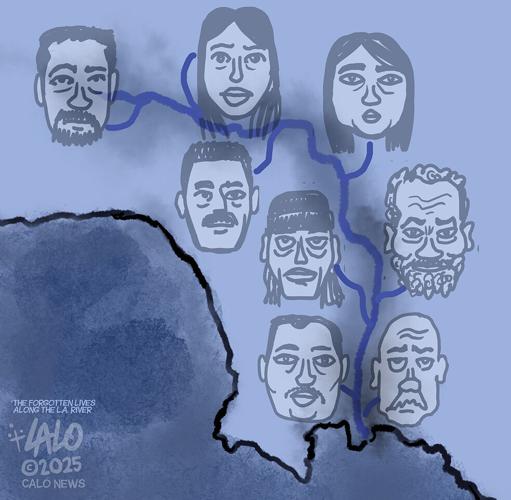


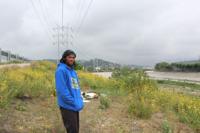

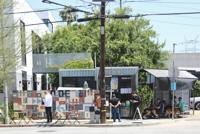

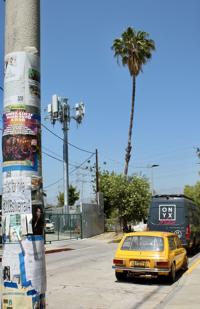

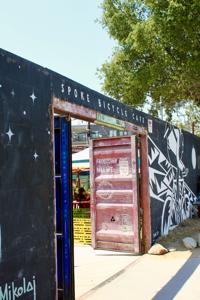

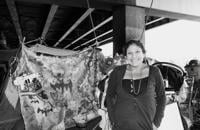

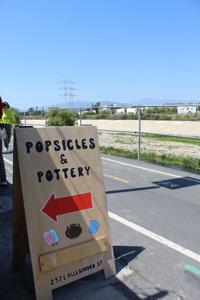

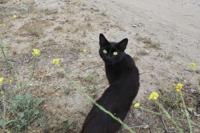

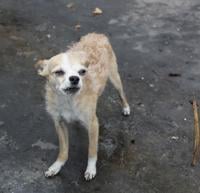
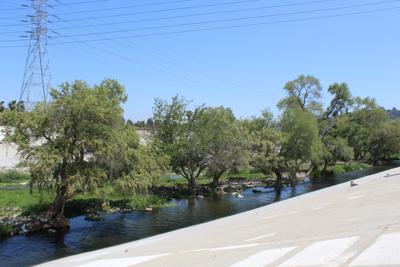

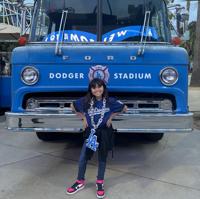

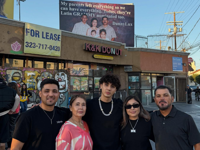



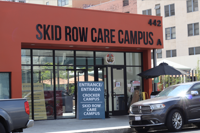
(0) comments
Welcome to the discussion.
Log In
Keep it Clean. Please avoid obscene, vulgar, lewd, racist or sexually-oriented language.
PLEASE TURN OFF YOUR CAPS LOCK.
Don't Threaten. Threats of harming another person will not be tolerated.
Be Truthful. Don't knowingly lie about anyone or anything.
Be Nice. No racism, sexism or any sort of -ism that is degrading to another person.
Be Proactive. Use the 'Report' link on each comment to let us know of abusive posts.
Share with Us. We'd love to hear eyewitness accounts, the history behind an article.